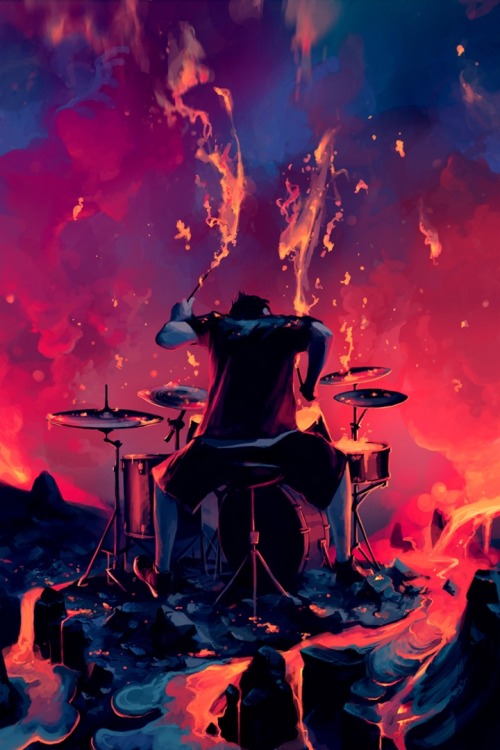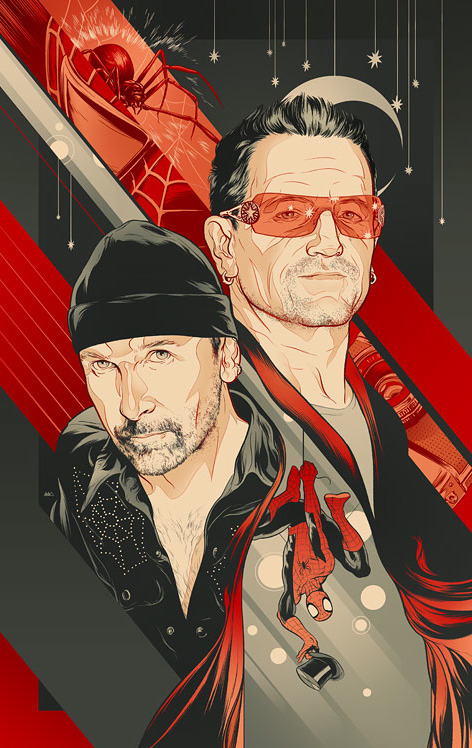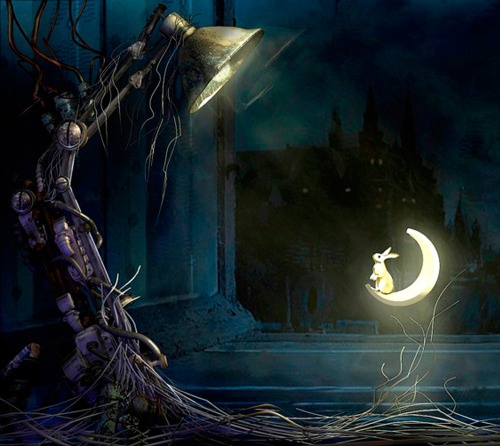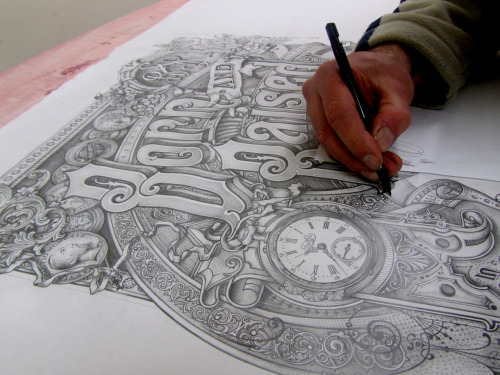One of the biggest things people noticed about
Sunday's episode of Game of Throneswas something that wasn't there: nudity and explicit sex. The show totally failed to meet whatever quota you might imagine it would have for naked skin and heaving bosominess.
This was especially noticeable because in the past week or so, we've seen lots of people discussing the especial gratuitousness of Game of Thrones' pornitude. In fact, we're left wondering: Is the show's gratuitous sex more upsetting than the gratuitous violence? Spoilers for already-aired episodes below...
Maybe it was the brutal "Joffrey's birthday present" sequence the week before, or the random scenes of
Sartrean voyeurism and fellatio in Littlefinger's brothel a couple weeks earlier. But people have been getting noticeably restive about the amount of pointless nastiness in
Game of Thrones this year.
In the Washington Post, Jezebel founder Anna Holmes writes that the show's "often outlandish" eroticism "often overshadows or distracts from the actual story." She notes that the men hardly ever disrobe fully on this show, while women are frequently naked, and that any time you see a woman wearing a dress with buttons, you know it's coming off soon. And they all seem to have waxed: "I call the pubic hair pattern so often seen on Westerosi women 'the King's Landing Strip,'" North adds.
And North quotes
the Huffington Post's Mo Ryan as saying, "Sometimes
Game of Thrones uses sexual scenes to shed light on character. But quite often, it shows naked women because it can."
Meanwhile,
over in the New Yorker, Emily Nussbaum writes, "
Game of Thrones is unusually lurid, even within the arms race of pay cable: the show is so graphic that it was parodied on
Saturday Night Live, with a "behind-the-scenes" skit in which a horny thirteen-year-old boy acted as a consultant."
Is sex more upsetting than decapitations?
It's a truism that Americans are more upset by explicit sex than explicit violence. It's also true, though, that in American pop culture, explicit sex is largely about women's bodies, while explicit violence is about men's bodies. (This is slowly changing, as Michael Fassbender's frequently uncovered body and The Hunger Games attest.) Also, in most American pop culture, sex is something done to women, while violence is something men do to each other. (And to women.)

But in the case of Game of Thrones, the complaints seem to be that the sex is both outlandish and extraneous to the story. But so, frequently, is the violence. And the balance has shifted somewhat this year, in favor of totally non-essential brutality. The season opener and last night's episode had plenty of random violence, but little or no sex. (The opening scene of the second season: Two knights battling, until one of them ends up a wet smear on the paving stones. Then another knight is almost forced to drink himself to death.)
And the depiction of sex seems to have changed this season. Instead of last year's "sexposition," where a character stands around and rattles off backstory while surrounded by hot nudes, this year's flavor seems to be random bawdry with little informational content. And the depictions of sex are getting nastier — not in the Janet Jackson sense but in the
Thomas Hobbes sense.
In its first season, the sex inGame of Thrones was mostly pretty jolly — but this year, the show seems to have been doing its best to blur the lines between sexuality and violence. Take the aforementioned "Joffrey's threesome" scene, which pushes the envelope of what even a subscription cable channel can get away with. Even when the sex is more or less consensual, as in the case of Theon Greyjoy's frolic with a girl on a boat, it's still shown to be exploitative and dehumanizing. Theon shows utter contempt for the girl who's sleeping with him in the hopes of getting off the boat she's trapped on.
Meanwhile, there's the ultra-squicky business of Stannis Baratheon having sex with his priestess on top of a map of the upcoming battle, while promising him a son — and then giving birth to a weird oily ooze-assassin instead.
The sex in this show has become downright distasteful. But is it worse than the foot-sawing and rat-torture? This is one of those questions that's down to the individual to answer, probably.
It's also true that both the sex and the violence have both been more gratuitous lately — in the sense that they seldom move the story forward. An example of non-gratuitous sex would be Cersei and Jaime hooking up, in the show's first ever episode. An example of non-gratuitous violence would be the decapitation of Ned Stark.
On the other hand, something can have other purposes besides moving the story forward. Theon's scene with the boat wench tells us a lot about him as a person. There's world-building, in which a gratutious scene can illustrate "the kind of things that happen a lot in this world." And finally, there's the notion — which is a very important theme in the books — that during wartime, a lot of social constraints get loosened or shredded, and the result is a non-stop parade of atrocities. Also, the powerful destroy the regular people with zero consequences.
Sex work is the leading industry in Westeros
But that doesn't explain all of it — there's also the fact that this show explores the sex industry in fetishistic detail, while the rest of Westeros' economy is kept as vague as possible. Even, you could argue, the institution of knighthood is less comprehensively fleshed out (no pun intended) than the skin trade. This is partly a consequence of the fact that the show has made a concerted effort to beef up the screen time of brothel-owner Littlefinger, a sleazy rascal who is just one of a few schemers in King's Landing. And thus we've spent a lot of time in Littlefinger's brothels, so we can learn just how much of a sleazy rascal he really is. (Answer: very.)
On the plus side, the show has given us three distinct sex-worker characters: Ros, Shae and Doreah (Daenerys' right-hand woman.) And they bring vastly different perspectives to their trade, which are changing over time. Ros is transforming from "saucy independent woman seeking her fortune" to "traumatized prisoner of Littlefinger, who's seen terrible things" — and we can only hope that her storyline has an actual pay-off, since she's a new addition to the story.
Shae also seems fiercely independent, and resistant to Tyrion's efforts to control her because she's a liability. And even though she's going along with him for now, she seems ready to bail if things get too complicated — there's no Littlefinger in her life, so she can leave any time she wants. Doreah was bought by Viserys, but seems to have become genuinely happy to use her sexuality on Daenerys' behalf — judging from the way she volunteers to perform "sexpionage" in Qarth.
So at least, we're not being told that all sex workers are the same, or that sex-work is a uniform occupation. Three different women have strikingly different situations and attitudes, and hopefully actual story-arcs to go with them. That's definitely a good thing, if this show is going to focus on sex-work as much as it does.
More female perspectives
Meanwhile, another plus is the fact that this show has vastly increased the number of female characters who can carry a scene.
In the books, George R.R. Martin has two types of characters: there are viewpoint characters, through whose eyes we see all the action. And then there are non-viewpoint characters, who are innately less sympathetic. (And even within those two classes, there appear to be strata.)
Martin only has four female viewpoint characters in the first three books,
According to A Wiki of Ice and Fire: Catelyn Stark and her two daughters, plus Daenerys. It's not until the fourth book that we get more female POV characters.
So the only female viewpoint character who has any kind of notable sexuality in the first three books is Daenerys Targaryen, whose embrace of her sexual power is a huge part of her success as Khaleesi. We see plenty of sex in those first three books, but it's almost always through the eyes of men.
And the show largely follows suit, treating us to the male gaze over and over — but at least with characters like Ros, you are getting a window into how they feel about what's going on.
Meanwhile, the show has also followed the books in giving us several female characters who are leaders or fighters. We just met Yara Greyjoy, who commands 30 ships and seems more or less to be one of the guys among the Ironborn. And the most moving and powerful scenes in this week's episode both involved someone expressing loyalty and devotion to a female leader: Ser Jorah explaining why Daenerys would be a great ruler, and Brienne of Tarth pledging herself to the courageous Cat Stark.
At the same time, these powerful women are largely portrayed as asexual — Cat Stark is a widow with no interest in finding another man, Brienne of Tarth projects an air of sexless devotion to swordplay, and it's hinted that Daenerys will lose much of her status and power if she takes Xaro Xoan Daxos (or anyone else) into her bed. The only characters who are really defined by their sexuality (rather than its absence) are the three sex workers.
Let's hope we get to see Yara Greyjoy take a lover soon, for her own pleasure rather than expedience.
Rape and babies are two major tools of statecraft
And finally, there's the fact that this show is depicting a pretty ugly patriarchy, in which rape is a legitimate tactic and male rulers need male heirs to cement their reign. As Nussbaum writes, this show fits squarely into the "the sophisticated cable drama about a patriarchal subculture" genre.
The Ironborn culture that Theon Greyjoy so desperately wants to belong to is one that involves not just piracy, but woman-stealing. Trying to win over the loyalty of his new crew, Theon promises they'll seize lots of women. And Daenerys causes huge political problems for her husband Khal Drogo when she tries to put a stop to casual rape among the Dothraki — a crisis which leads, more or less directly, to Drogo's death.
Meanwhile, lots of sex that appears to be consensual at first glance turns out to be a lot more coercive and horrible the moment you take a closer look — just look at Craster and his daughter-wives. Or Theon and his wannabe salt-wife. If Sansa Stark actually marries King Joffrey, will their wedding-night sex really be consensual?
Which brings us to the other point — the importance of a male line of descent means that women are sold into marriage, the way Tyrion has just sold Princess Myrcella. And once married, their sex life with their husbands is a matter of public interest, as Margaery Tyrell discovered in her sexless marriage to Renly. (And if people begin to suspect that your children are not your husband's, it can create huge political crises, as Queen Cersei is discovering.)
So to some extent, this show is following the books in depicting a world where rape is one of the spoils (and tools) of war, and the sex lives of powerful people are the building blocks of governance.
So is the gratuitous sex too gratuitious lately? Is it more button-pushing than the gratuitous violence? I don't really have a cut-and-dried answer, since it really is an individual quesiton. I do, however, have a few random thoughts:
1) This could be the thin end of the wedge, and this show could degenerate into the kind of incoherent pornfest that certain other shows have turned into. That would be especially bad in the case of Game of Thrones, which really does have important stuff to say about governance, politics and society.
2) There is another benefit to gratuitousness, besides world-building — sometimes, it's better if the plot doesn't revolve around sex and especially sexual violence. That is to say, if we're going to witness horrible sex acts, maybe it's better that they be gratuitous.
The fact that we see distasteful and abhorrent sex acts, and they aren't a major turning point for a leading female character, is in itself a good thing in a way. Because it, in turn, means there are female characters whose storylines are based on things other than sex and rape. (See
last week's interview with Brit Marlingfor a great critique of the notion that female characters' main obstacle to overcome is sexual assault.) If you're going to have sexual direness, maybe it should be gratuitous rather than crucial.
3) This show's willingness to take insane chances has consistently blown me away — even if the outcome of those chances hasn't, always. Just trying to put George R.R. Martin's fucked-up vision on television was an insane gamble, and most shows would have patted themselves on the back and stopped there. But in addition to keeping the crucial elements of the Martinverse intact, this show has gone further, taking more risks with a lot of the minor characters and making the already gruesome world of Westeros just a bit weirder and more lurid. In a world where so much of our entertainment is purposely bland and dumbed down, it's a good thing that at least a few creators are letting their freak flag soar a bit.




































































